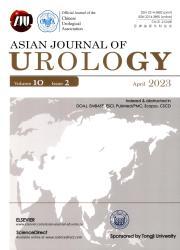Predictors of postoperative infectious complications after partial nephrectomy: Analysis at a referral institution
IF 2.4
3区 医学
Q2 UROLOGY & NEPHROLOGY
引用次数: 0
Abstract
Objective
Infectious complications after partial nephrectomy (PN) remain a significant concern. We aimed to analyze predictive factors of postoperative infectious complications (PICs) occurring after PN.
Methods
Data on patients undergoing PN for renal masses between January 2018 and May 2023 were retrieved from prospectively maintained institutional database and retrospectively analyzed. Patients were stratified into two groups based on the occurrence of PICs during admission for PN. A PIC was defined by clinical and/or imaging findings of an infectious process plus microbial isolation upon culture examination. Multivariable logistic regression analysis after adjusting for potential confounders evaluated predictors of a PIC.
Results
Six-hundred and twenty-seven patients underwent PN; rough incidence of PICs was 11%, with median time to PIC onset of 1 (interquartile range 0–3) day. Compared to patients without PIC events, the PIC group showed a significantly higher proportion of open surgeries (54% vs. 20%, p<0.001), bleeding events (23% vs. 10%, p<0.01), postoperative transfusion (19% vs. 5.0%, p<0.001), and urinary leakage (4.2% vs. 0.18%, p=0.01), and a statistically significantly higher median hemoglobin drop from baseline (−2.6 g/dL vs. −1.7 g/dL, p=0.001). At multivariable logistic regression, the odds of experiencing a PIC were statistically significantly lower after minimally-invasive surgery compared to open surgery (odds ratio 0.32, 95% confidence interval 0.17–0.59), and higher for patients who received transfusion (odds ratio 1.68, 95% confidence interval 1.10–2.54).
Conclusion
We underlined factors that impact the occurrence of PICs and, consequently, duration of hospitalization following PN. By addressing these predictors, clinicians can promote enhanced patient recovery.
肾部分切除术后感染并发症的预测因素:转诊机构分析
目的:部分肾切除术(PN)后的感染性并发症仍然是一个值得关注的问题。我们旨在分析PN术后感染并发症(PICs)发生的预测因素。方法从前瞻性维护的机构数据库中检索2018年1月至2023年5月期间因肾脏肿块接受PN治疗的患者数据并进行回顾性分析。根据住院期间PICs的发生情况将患者分为两组。感染过程的临床和/或影像学结果加上培养检查后的微生物分离来定义PIC。在调整潜在混杂因素后,多变量逻辑回归分析评估了PIC的预测因子。结果627例患者行PN治疗;PIC的粗略发生率为11%,发生PIC的中位时间为1天(四分位数范围0-3)。与没有PIC事件的患者相比,PIC组的开放性手术(54%对20%,p<0.001)、出血事件(23%对10%,p<0.01)、术后输血(19%对5.0%,p<0.001)和尿漏(4.2%对0.18%,p=0.01)的比例显著高于无PIC事件的患者,血红蛋白中位数较基线下降(- 2.6 g/dL对- 1.7 g/dL, p=0.001)具有统计学意义。在多变量logistic回归中,微创手术后发生PIC的几率显著低于开放手术(优势比0.32,95%可信区间0.17-0.59),而接受输血的患者发生PIC的几率更高(优势比1.68,95%可信区间1.10-2.54)。结论我们强调了影响PICs发生的因素,从而影响了PN后住院时间。通过解决这些预测因素,临床医生可以促进患者的康复。
本文章由计算机程序翻译,如有差异,请以英文原文为准。
求助全文
约1分钟内获得全文
求助全文
来源期刊

Asian Journal of Urology
UROLOGY & NEPHROLOGY-
CiteScore
4.00
自引率
3.80%
发文量
100
审稿时长
4 weeks
期刊介绍:
Asian Journal of Urology (AJUR), launched in October 2014, is an international peer-reviewed Open Access journal jointly founded by Shanghai Association for Science and Technology (SAST) and Second Military Medical University (SMMU). AJUR aims to build a communication platform for international researchers to effectively share scholarly achievements. It focuses on all specialties of urology both scientifically and clinically, with article types widely covering editorials, opinions, perspectives, reviews and mini-reviews, original articles, cases reports, rapid communications, and letters, etc. Fields of particular interest to the journal including, but not limited to: • Surgical oncology • Endourology • Calculi • Female urology • Erectile dysfunction • Infertility • Pediatric urology • Renal transplantation • Reconstructive surgery • Radiology • Pathology • Neurourology.
 求助内容:
求助内容: 应助结果提醒方式:
应助结果提醒方式:


